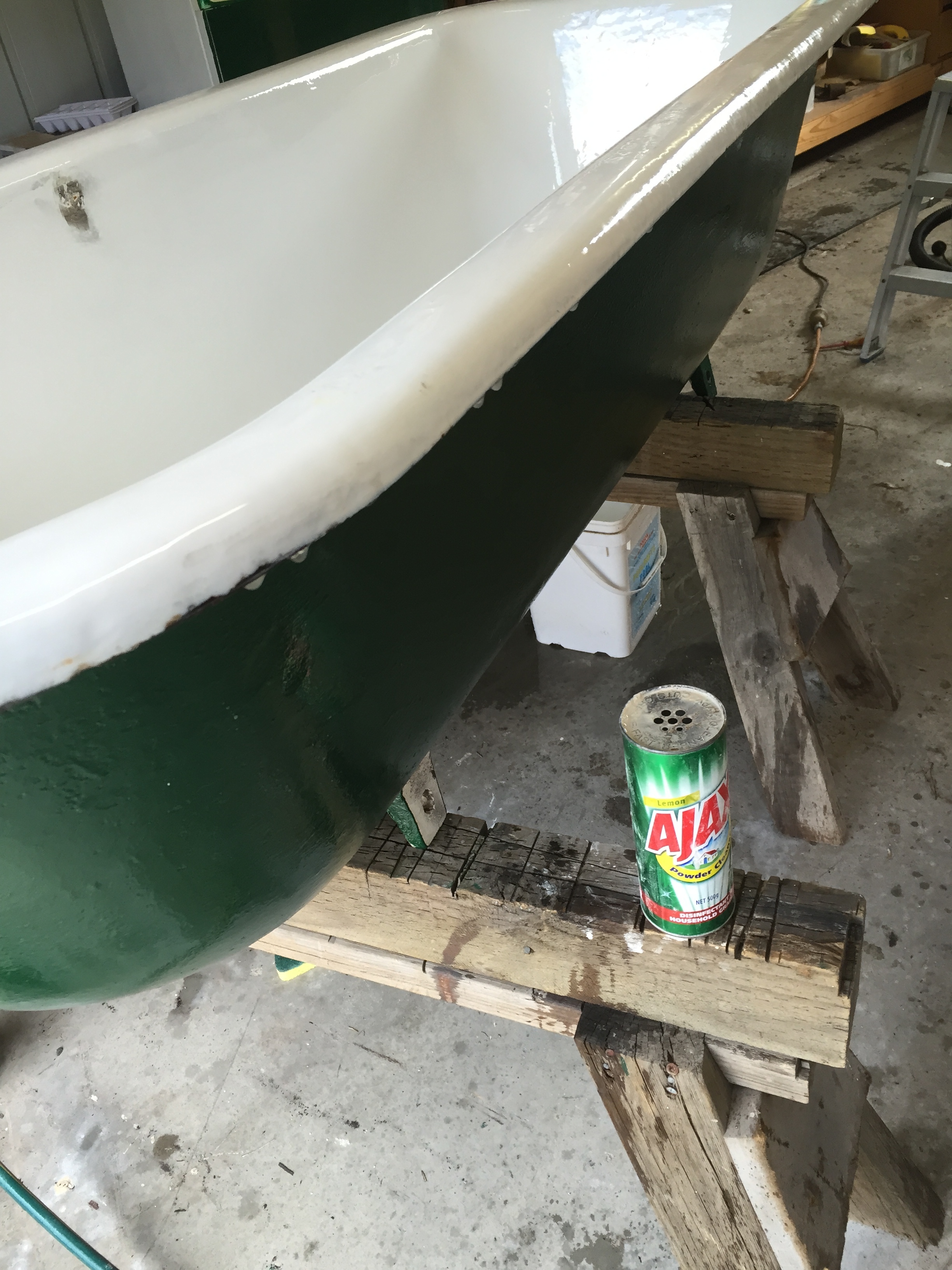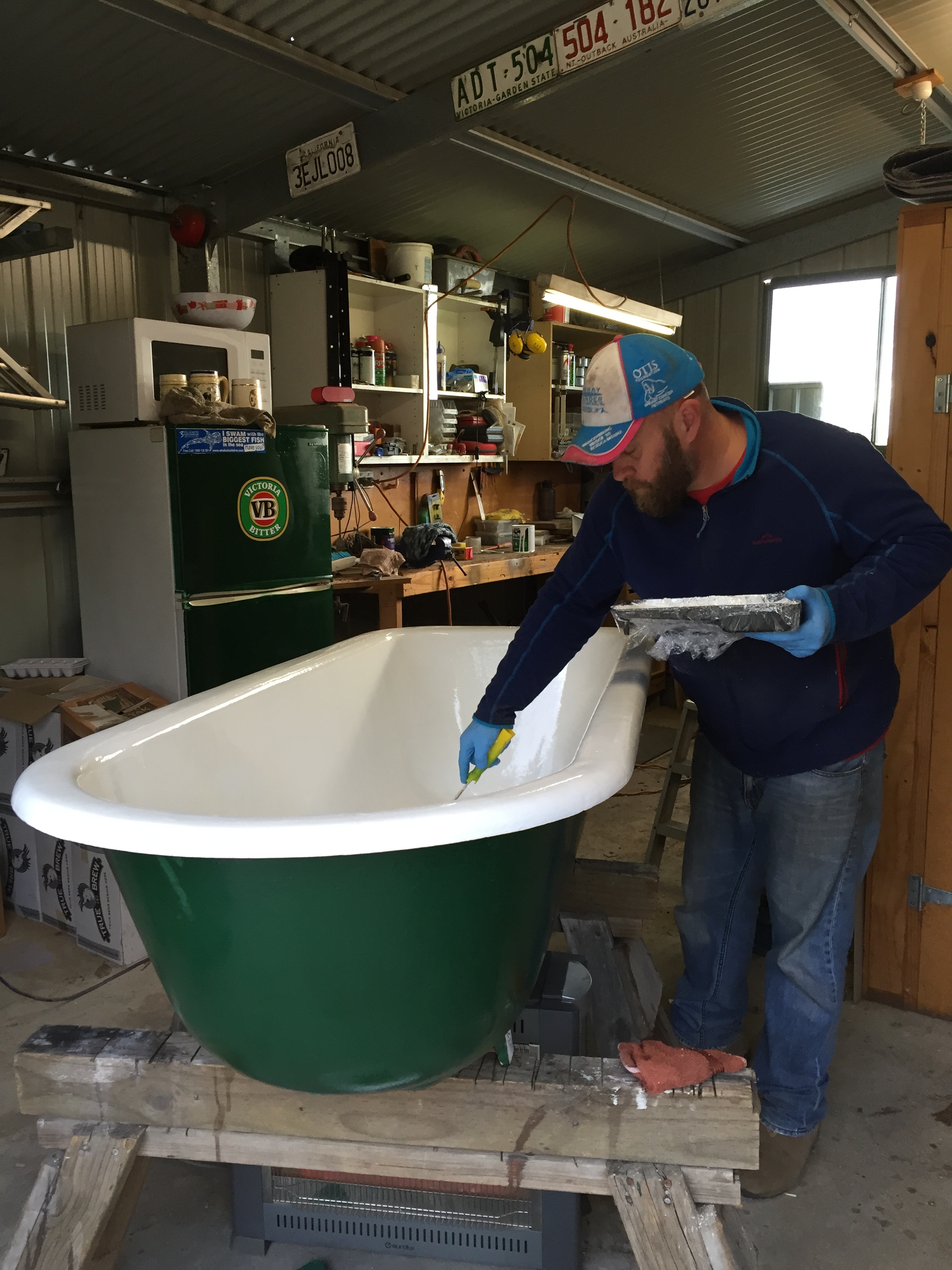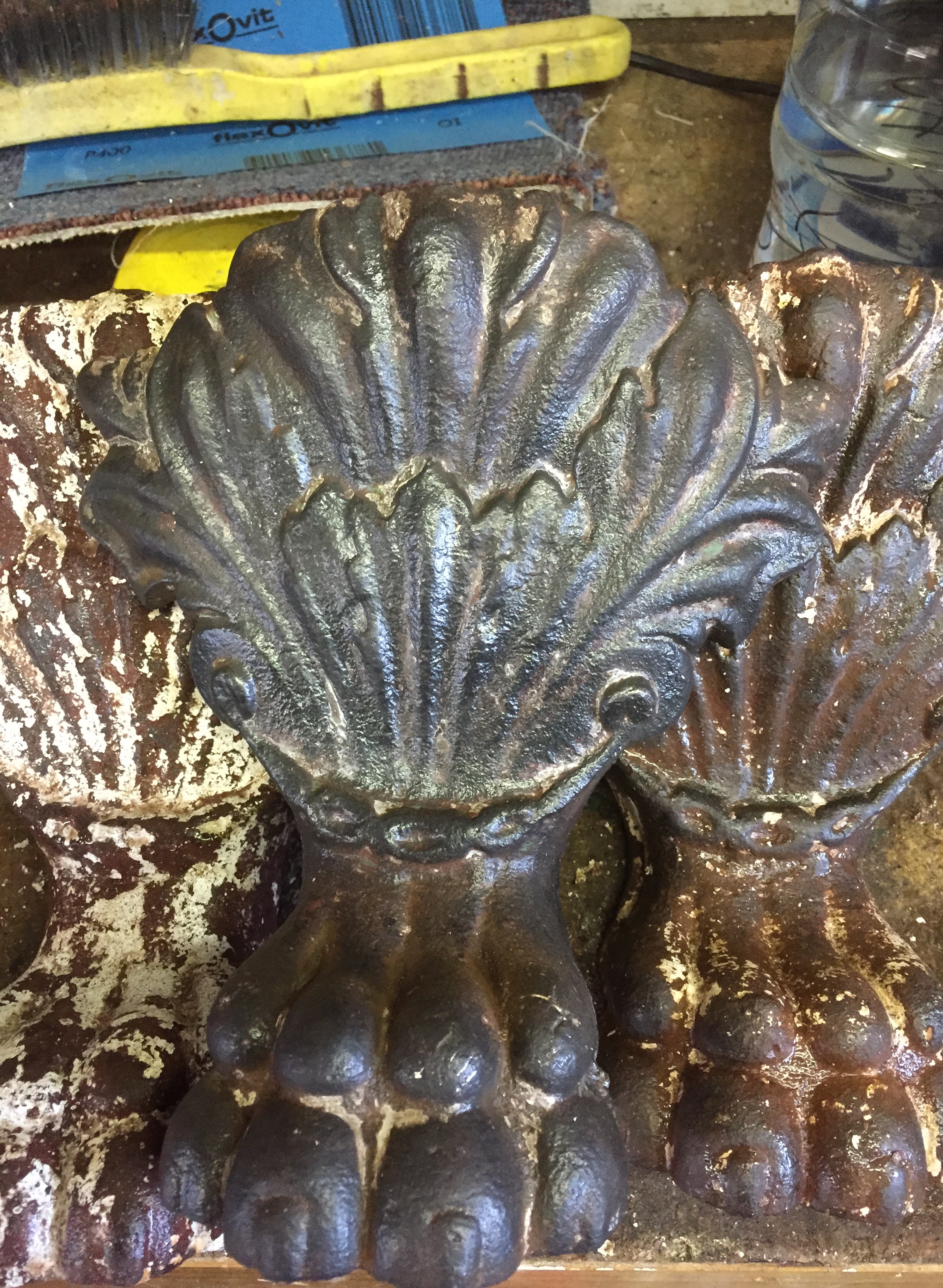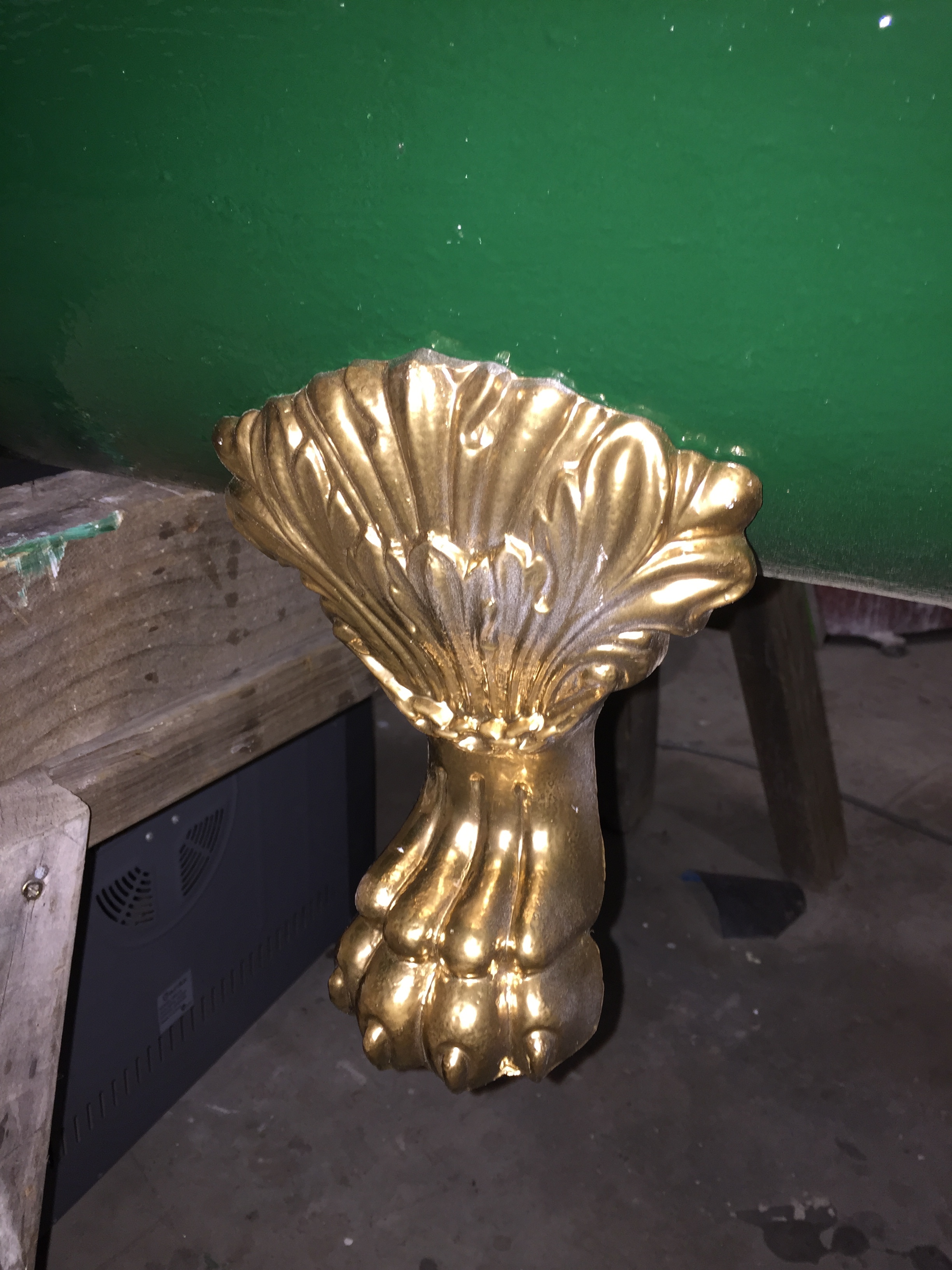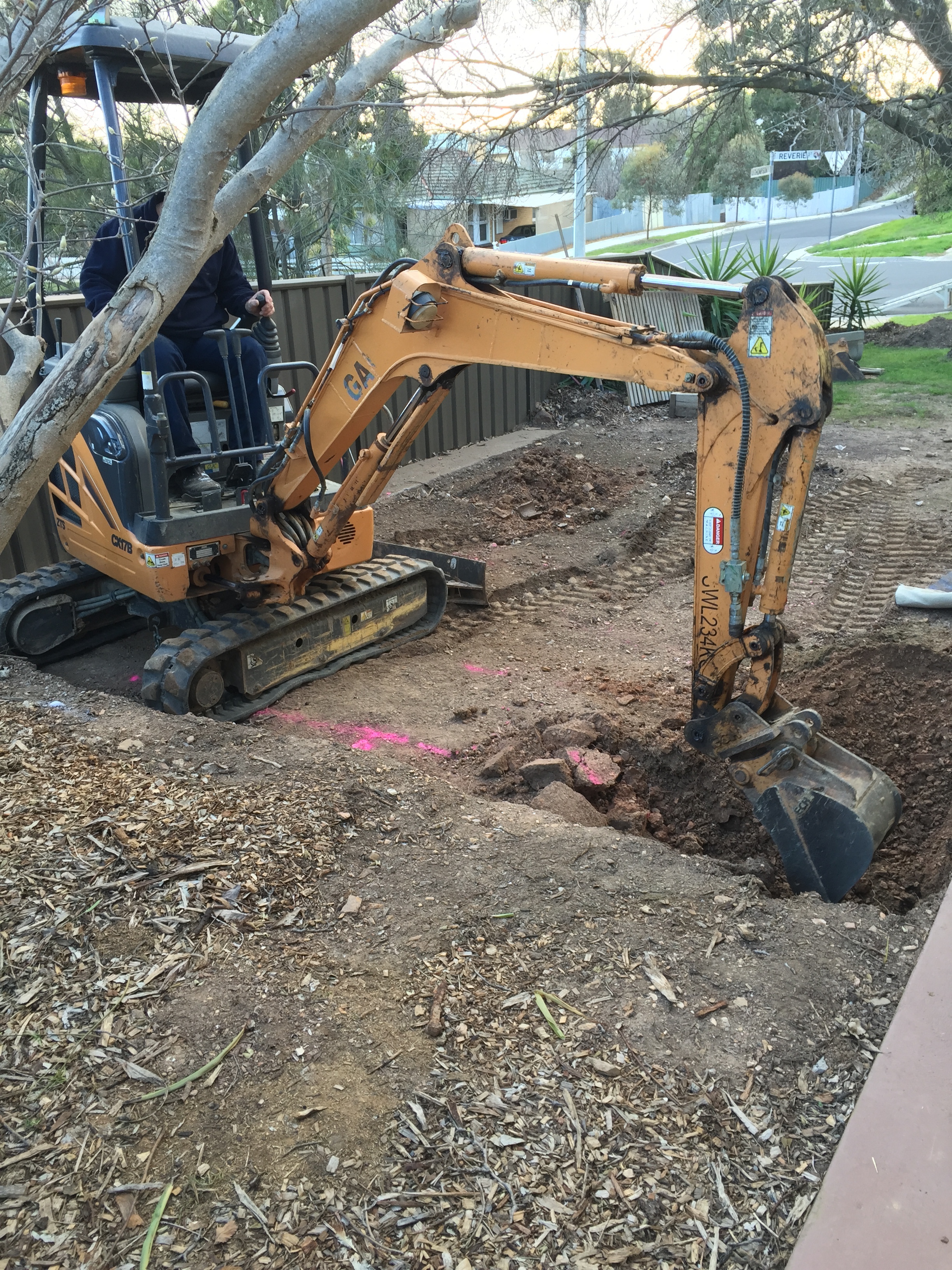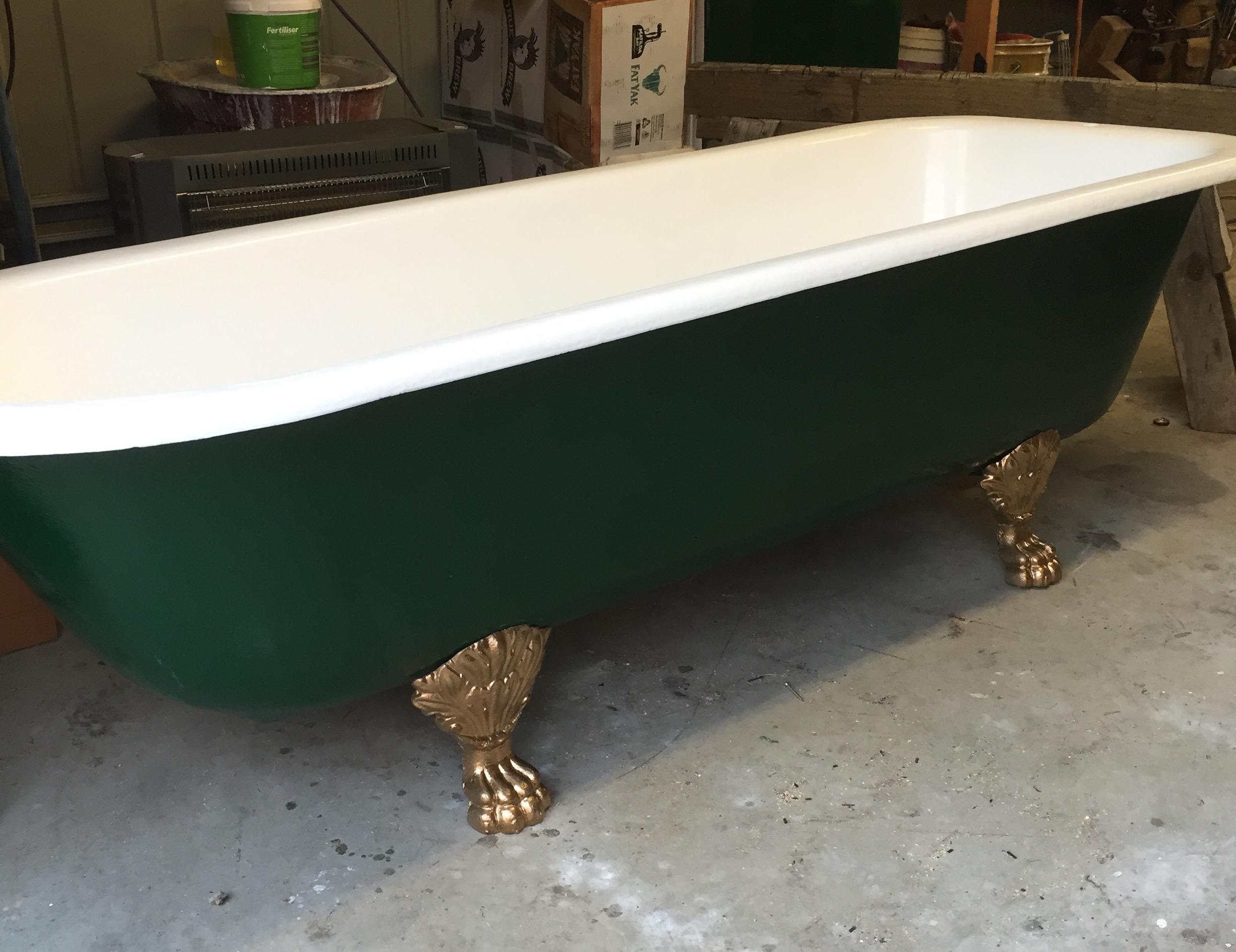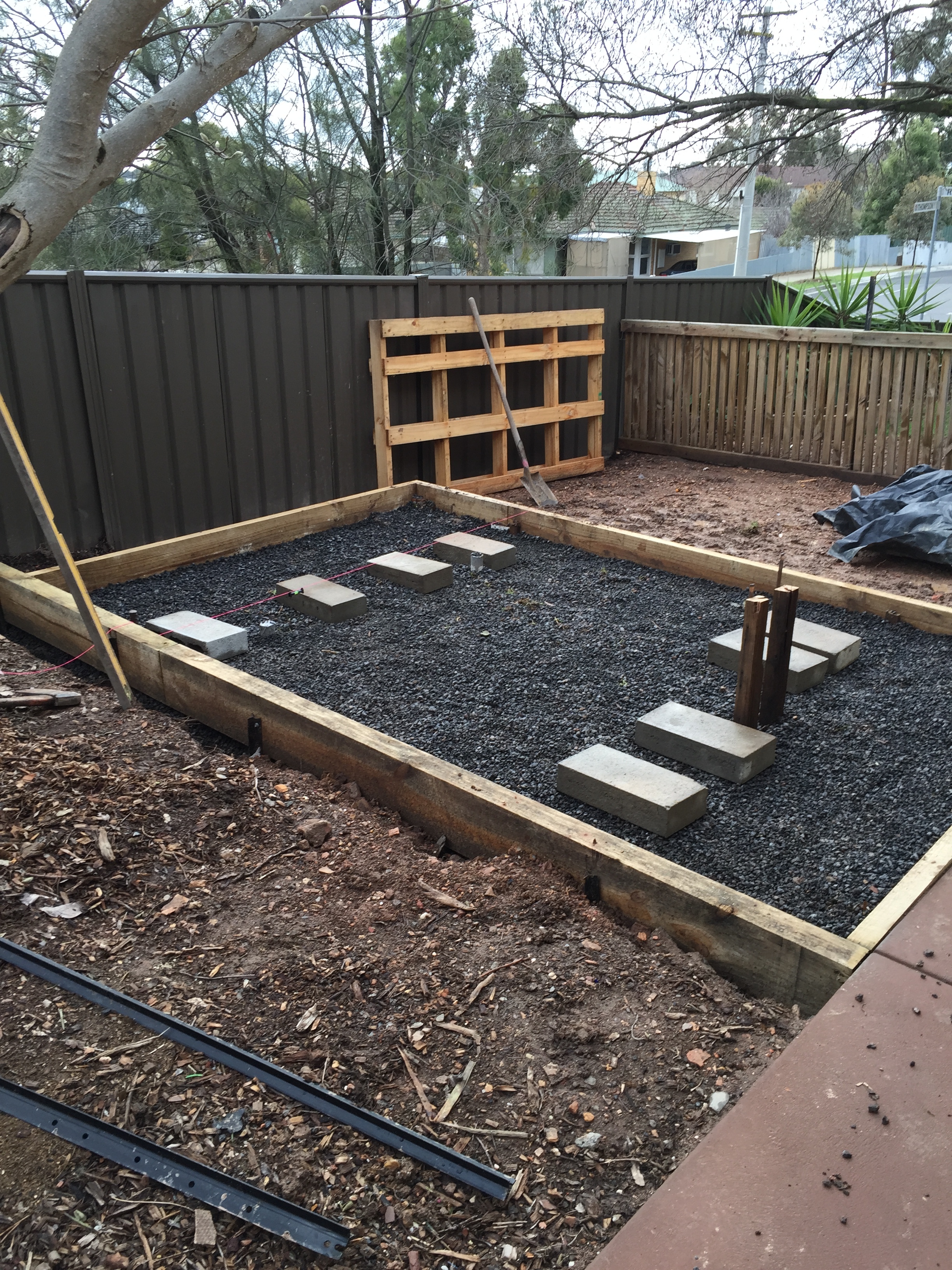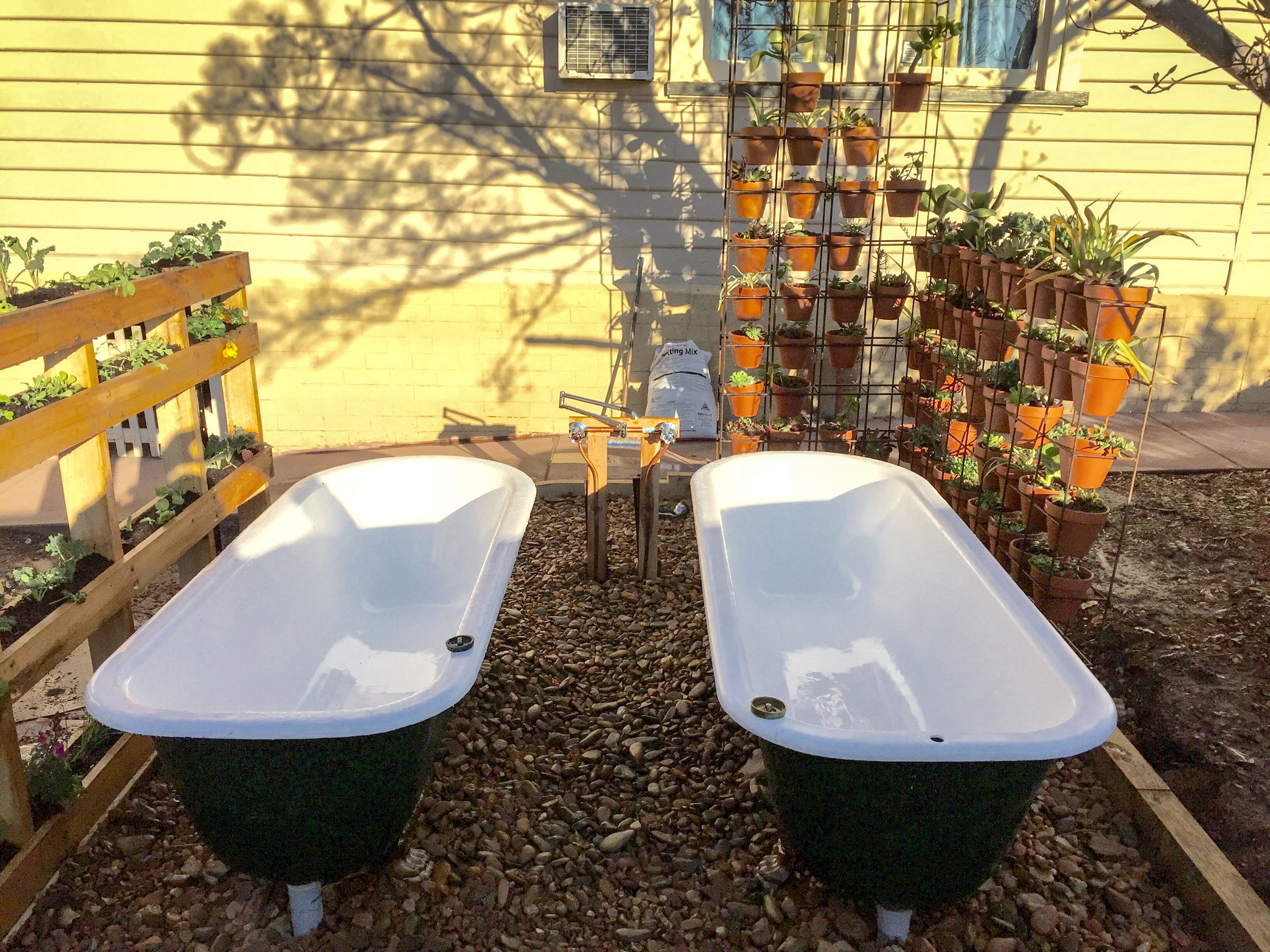NO SPACE FOR A BATH INSIDE? AN ENTERPRISING COUPLE INSTALL AN OUTSIDE BATHROOM SO THEY CAN ENJOY A GOOD OLD SOAK.
Chris decided the solution was build an outdoor bathroom featuring two baths so he and Meg could both enjoy a long soak together. The main criteria was plumbing both baths with hot water so that it was easy to fill them and keep the water hot if the couple were wallowing for a long time. Chris sourced two old cast iron baths from Gumtree classified ads and both were pretty rough as they had been used as garden beds and only had two feet between them. He tracked down some claw feet on Ebay and was surprised at how many different styles of feet are available. Over winter Chris spent hours in the shed using a wire brush attached to a drill to get the loose paint off. Then he cleaned up the inside of the baths with Ajax and a run over with wet and dry sandpaper. He painted the outside of the baths with gloss enamel and then painted the inside with Tub and Tile using a roller to get a smooth finish without having to send them to Melbourne to get them enamelled. A strategically placed heater helped the paint to dry. Next job was to clean up the feet with the wire brush attached to a drill and paint stripper. Once the surface was clean, the feet were sprayed with gold paint and attached. The baths were ready for action.
Clearing site
Tagline Then came the installation. Firstly, greenery had to be removed from the site so the excavator could access the area and make it level. The plumber came and dug all the trenches to lay the pipes under the house to the solar hot water (with gas backup) and then the drains from the baths out to the sewer. Chris boxed up the area with 2000 mm x 500 mm pine sleepers and filled it with a layer of crushed rock with besser blocks placed where the feet would be to spread the weight evenly. Then the new “bathroom” floor was topped with smooth river stones. Once the baths were in place vertical gardens were erected for privacy. The succulent garden is made from welded concrete reinforced wire mesh sheets just big enough to hold the terracotta pots. On the other side of the bathroom a vertical herb and flower garden was built to hide bathers from the street. Spiky yucca plants and a lime tree on the fence line are also great for providing privacy. “A beautiful magnolia tree with hanging lanterns lights up the area,” says Meg. “But when we are enjoying a bath after dark with a bottle of wine or a couple of beers the lanterns get turned off so we can see the shooting stars.”

